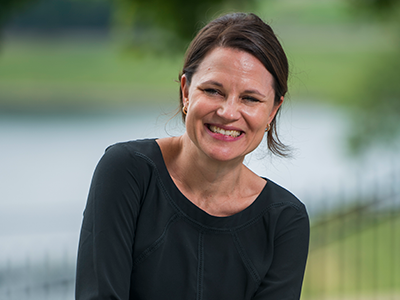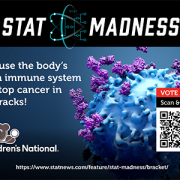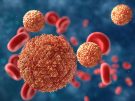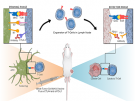TAA-Ts as therapy for tumors

“The T cell immunotherapy regimen resulted in prolonged disease stabilization in patients who previously experienced rapid tumor progression,” says Holly Meany, M.D. “The therapy could prove to be an important component of immunotherapy for patients with solid tumor malignancies.”
In a study published in the Journal of Clinical Oncology, researchers from Children’s National Health System uncovered tumor-associated antigen cytotoxic T cells (TAA-Ts) that represent a new and potentially effective nontoxic therapeutic approach for patients with relapsed or refractory solid tumors.
The Phase 1 study led by Children’s National pediatric oncologists Holly Meany, M.D., and Amy B. Hont, M.D., represented the first in-human trial investigating the safety of administering TAA-Ts that target Wilms Tumor gene 1, a preferentially expressed antigen of melanoma and survivin in patients with relapsed/refractory solid tumors.
“These are exciting clinical results using a novel ‘first in-human’ T cell therapy,” said Catherine Bollard, MB.Ch.B., M.D., director of the Center for Cancer and Immunology Research at Children’s Research Institute. “This T cell therapy was safe and appeared to prolong patients’ time to progression which suggests that we can now use this novel treatment as a combination therapy to hopefully achieve long-term remissions in pediatrics and adults with relapsed/refractory solid tumors.”
During the Phase 1 trial, TAA-Ts products were generated from autologous peripheral blood and were infused over three dose levels. Patients were then eligible for up to eight infusions that were administered four to seven weeks apart.
Of the 15 evaluable patients, 11 were with stable disease or better at 45 days post-infusion and were defined as responders. Patients who were treated at the highest dose level showed the best clinical outcomes, with a 6-month progression-free survival rate of 73% after TAA-Ts infusion, an improvement as compared with prior therapy.
Overall, the Phase 1 trial of TAA-Ts resulted in safely induced disease stabilization and was associated with antigen spreading and a reduction in circulating tumor-associated antigen DNA levels in patients with relapsed/refractory solid tumors before infusion.
“The T cell immunotherapy regimen resulted in prolonged disease stabilization in patients who previously experienced rapid tumor progression,” said Dr. Meany. “The therapy could prove to be an important component of immunotherapy for patients with solid tumor malignancies,” she added.
The other researchers that contributed to this work are as follows: Amy B. Hont, M.D.; C. Russell Cruz, M.D., Ph.D.; Robert Ulrey, M.S.; Barbara O’Brien, B.S.; Maja Stanojevic, M.D.; Anushree Datar, M.S.; Shuroug Albihani, M.S.; Devin Saunders, B.A.; Ryo Hanajiri, M.D., Ph.D.; Karuna Panchapakesan, M.S.; Sam Darko, M.S.; Payal Banerjee, M.S.; Maria Fernanda Fortiz, B.S.; Fahmida Hoq, MBBS, M.S.; Haili Lang, M.D.; Yunfei Wang, Dr.PH.; Patrick J. Hanley, Ph.D.; Jeffrey S. Dome, M.D., Ph.D.; Catherine M. Bollard, M.D.; and Holly J. Meany, M.D.










